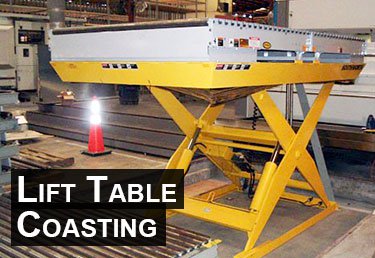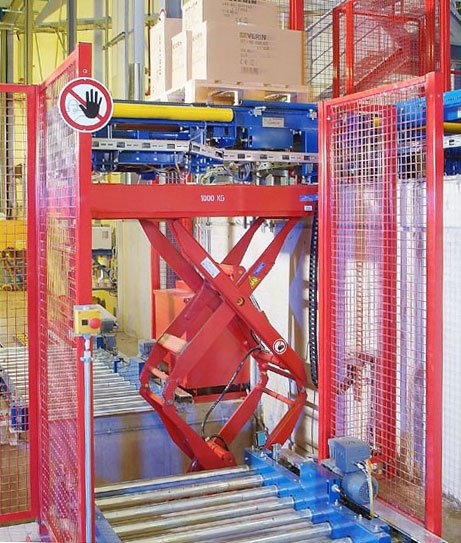
What is Hydraulic Lift Table Coasting and How Can It Be Prevented?
Greg Conner | 08 June 2015
It is often required that hydraulic lift tables stop at precise elevations. However, the phenomenon commonly referred to as lift table “coasting” can allow lift table platforms to continue past the intended stopping point.
What is Lift Table “Coasting”?
When a hydraulic lift table is raising, it is being powered. More specifically, an electric or air motor is turning a gear pump forcing hydraulic fluid into the cylinder(s) of the lift table. At a predetermined elevation, a limit switch is contacted, the motor shuts off and the lift table stops. As long as the load on the platform remains exactly the same, the lift table will stop at the same elevation with each cycle because the “coast” is always the same. “Lift table coasting” occurs when the limit switch is contacted, the motor shuts off, but the lift table continues or “coasts” past the desired stopping point.
When is Lift Table Coasting a Concern?
“Lift table coasting” is a concern when it is critical the lift table stop at the same elevation each time, regardless of the load on the platform. One common application which requires this type of precision is hydraulic lift tables that transfer product between conveyor lines that have differing infeed and discharge elevations.
What Causes Lift Table “Coasting”?
 There are three factors that affect how much a lift will coast:
There are three factors that affect how much a lift will coast:
- Weight on the lift table
- Size of the motor
- Speed of the lift
Since motor size and speed of the lift table are constants on a given lift, the amount of “coast” after the motor is shut off will not vary. Only the variable of weight changes the amount of “coast”. When the motor is shut off the lift table is “coasting” up to the actual elevation desired. But if the load varies, the actual elevation where the lift table stops will vary considerably.
The lighter the load on the platform the more “coast” there will be. This is because the lighter load is applying less resistance to the hydraulic pumping system. Conversely, heavier loads create more resistance and the amount of “coast” is less.
Can Lift Table “Coasting” Be Eliminated?
Fortunately yes, lift table “coasting” can be eliminated through the addition of a standard option commonly referred to as the “no coast valve package”. The “no coast valve package” incorporates a solenoid operated shut-off valve in the pressure line going from the pump to the cylinder(s). When a limit switch is contacted, the same signal that shuts off the motor, concurrently signals the valve to close, diverting pump flow back to the tank and shutting off the fluid flow to the cylinder(s). Thus, there is “no coast”.
Because this valve package is stopping the flow of fluid with a fast-acting solenoid, the resistance against the hydraulic system (load on the platform) is no longer a variable factor. The lift table will “coast” the same amount with each up cycle. In the example of a lift matching up to a conveyor, the no coast valve package insures accurate leveling and a smooth transition of material to or from the lift platform, regardless of the load. The optional “no coast” feature only functions when the lift is rising. When a lift is lowering, coast is minimal because a fast acting down solenoid is shutting off the fluid flow from the cylinder already. Selecting a lift table is not an easy process.
Bastian Solutions is widely recognized as a leader in industrial lift tables. We can assist you in selecting the correct industrial lift table for your application.
Greg is the SVP of Corporate Development and Marketing at Bastian Solutions. A proud Purdue University graduate, at Bastian he works to identify and drive strategies to propel the company forward. His responsibilities include identification of emerging technologies, forming strategic partnerships and M&A activities and execution of the strategic planning process. He carries with him years of experience in the field, having previously worked as a project engineer, field application engineer and regional director of Indiana.
Comments
No comments have been posted to this Blog Post
Leave a Reply
Your email address will not be published.
Comment
Thank you for your comment.